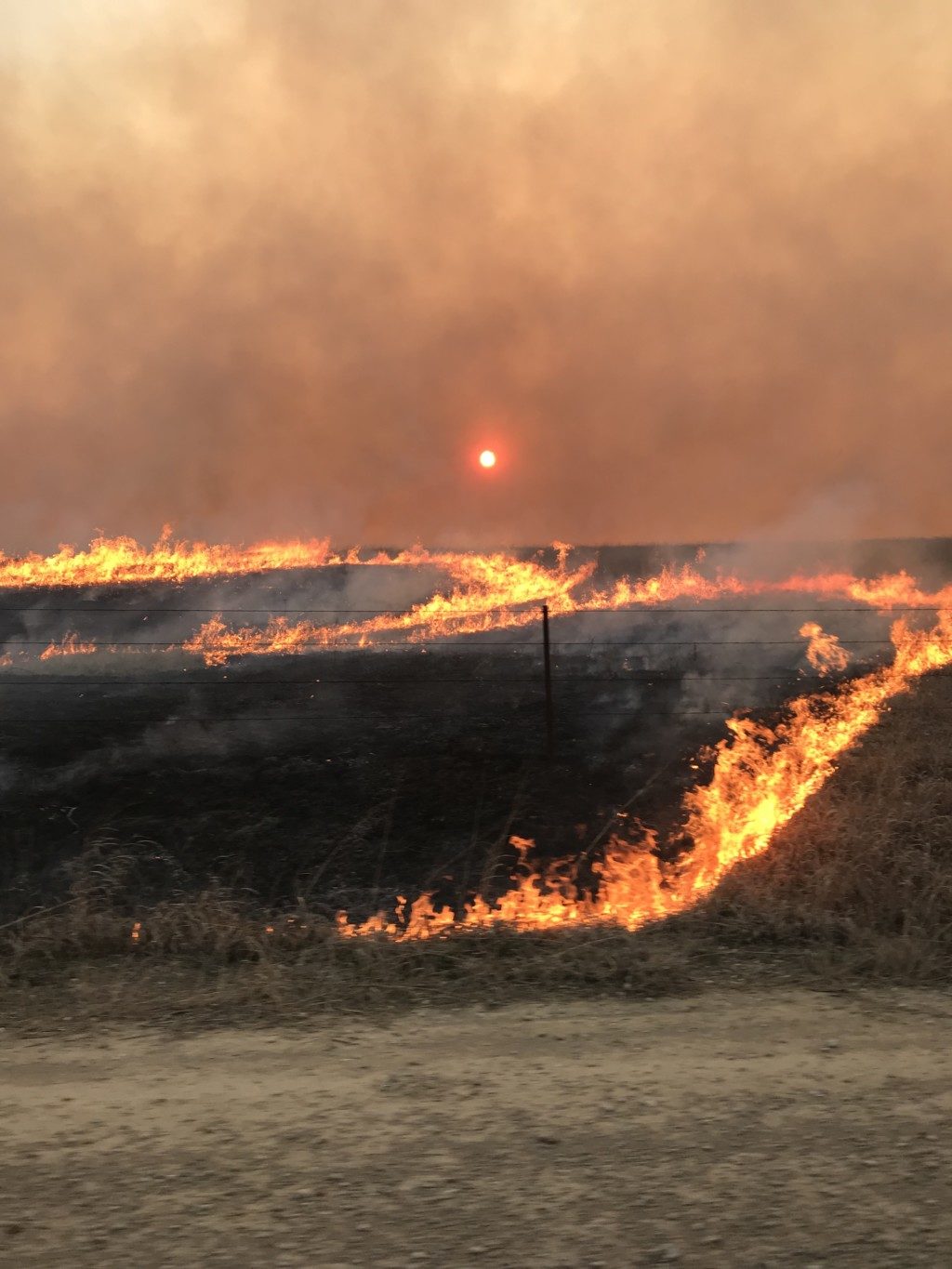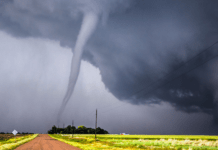 Spring is such an exciting time of the year. I’ve always wondered why they call it ‘Spring Cleaning’ and as a mom I’ve decided it’s because in spring it is finally nice enough outside you can shove your kids out the door to play, leaving the house kid-free and you can finally get things clean. True or not, spring always seems to be extra-busy.
Spring is such an exciting time of the year. I’ve always wondered why they call it ‘Spring Cleaning’ and as a mom I’ve decided it’s because in spring it is finally nice enough outside you can shove your kids out the door to play, leaving the house kid-free and you can finally get things clean. True or not, spring always seems to be extra-busy.
Here on the ranch, spring is definitely the busiest time of year. Spring is so full of life! The new calves are running through the pastures, seeds are getting planted, wheat is growing taller and we are burning. And by burning, I mean the annual prescribed burning of Flint Hills…and out here, that the true sign that Spring Has Sprung.
Each spring the dead grass is engulfed in flames and blue skies fill with clouds of smoke, a time-honored tradition passed down through generations, and one that actually started hundreds of years ago with the Native Americans.
It is my very favorite time of year, gorgeous and something I recommend adding to your list of things to see before you die – although none of these are the reason we burn. Prescribed burning is necessary each spring to protect the precious ecosystem in which we live. Burning is key to the Flint Hills for many reasons, but most importantly it protects the land from being overrun with invasive species, helps prevent wildfires, promotes new growth, protects wildlife species that rely on these prairies for survival and significantly reduces the use of chemicals to get rid of weeds.
The Flint Hills of Kansas are part of the Tallgrass Prairie, the largest remaining intact portion, in fact. According to the National Park Service, the Tallgrass Prairie once covered 170-million-acres of North America and spanned from Canada into Mexico. Now, only about 4% of that Tallgrass Prairie remains making it the most endangered ecosystem in the world (even more endangered than the rainforests!). Should we not maintain the grass the way we do with prescribed burns, it would be overrun with noxious weeds and trees and disappear within 40 years.
What happened to the rest?
As years passed, cities were built, prairie was converted to farm ground. That would have happened to the Flint Hills too, however, when the first settlers arrived, they were unable to plow through the rocky soil so they were forced to leave the native grass to grow and it became home to bison and cattle.
Today it is still home to cattle. In fact, did you know that Kansas is the 3rd largest producer of cattle in the country? And if that isn’t impressive enough, cattle outnumber people 2-to-1 in our state! Fun facts and both of which in large part due to the delicious native grasses that the Flint Hills provides. Better yet – all of this luscious grass that has no nutritional value to you or me, are consumed by cattle and their special stomachs digest that grass and turn into the most nutrient-dense protein there is, beef!

Now with all the good that the burning does for the grass, there are negatives too. It takes countless hours to burn this grassland, and fire is dangerous, obviously, so ranchers take every precaution: generations of training, lots of equipment, safety measures and these are ranchers that know what they are doing, in fact, a lot of ranchers are on their volunteer fire departments!
The smoke the fires produce are not ideal – sometimes the smoke can even drift into cities such as Wichita or Kansas City.
This is something that ranchers try very hard to avoid.
So much so, along with the Environmental Protection Agency (EPA), Kansas Livestock Association, Kansas State University, City of Wichita (and so many other agencies) the Flint Hills Smoke Management Plan was developed with a goal to “attempt to balance the need for prescribed fire in the Flint Hills with the need for clean air in downwind communities.” Just like most things on the ranch – the weather is KEY. So, using this resource with their help to watch the weather and wind forecasts, and reducing the number of prescribed burning that occurs at the same time, all help to reduce the likelihood of smoke drifting into the city.

Next time you see smoke in the April sky, or hear about it on the news, you will know that the Farmers and Ranchers are doing what they can to ensure the land they were tasked with caring for is well taken care of; and therefore its beauty will last for the generations to come.

















Great job explaining the importance of spring burning in the Flinthills!